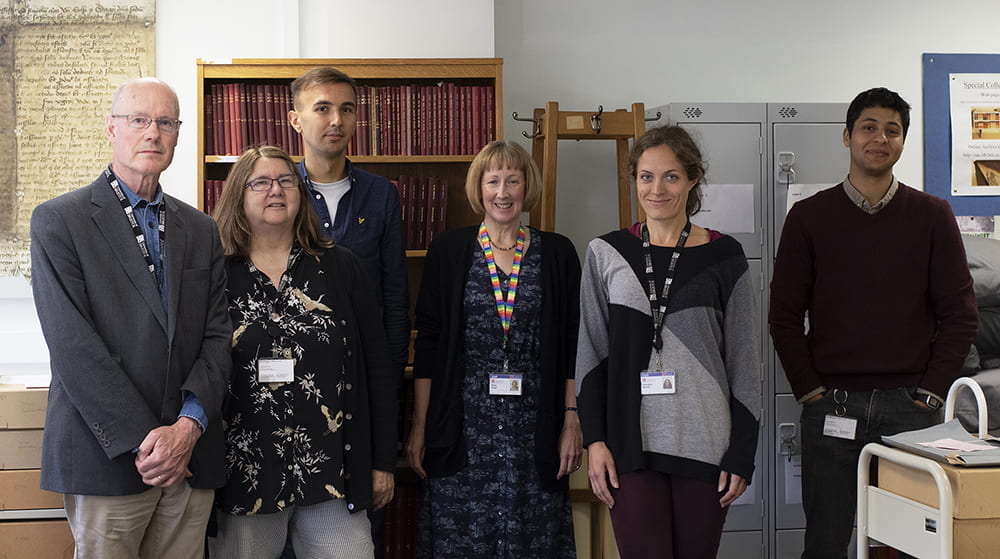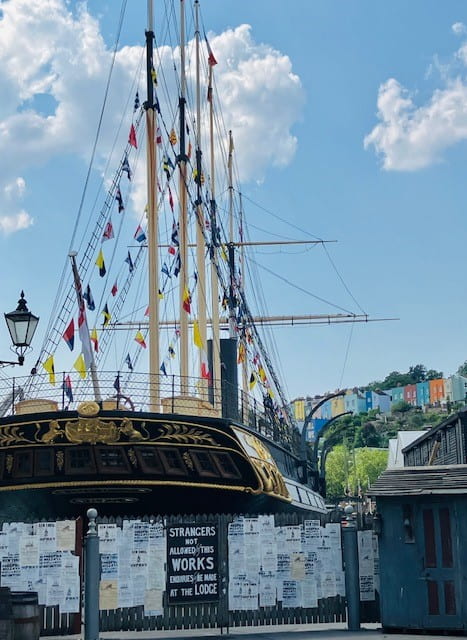Catherine Dack, Research Support Librarian, Library Services, writes about our contribution to the virtual museum.
Special Collections recently contributed digitised versions of some of our collections to The Uncertain Space, the new virtual museum for the University of Bristol which officially launches this week.
The Uncertain Space is a permanent museum space which will host a changing programme of exhibitions. It is just like a real-world museum, but is experienced online or in a virtual reality headset. The first exhibition, Secret Gardens, has been co-curated with a group of young Bristolians. It explores connections between the University’s public artworks and selected objects from across the University’s rich collections, underpinned by the interest of our ‘Secret Gardeners’ in activism and climate change.
Items from Special Collections that feature in the first exhibition include:
Kaleidoscope magic lantern slide (DM3192)
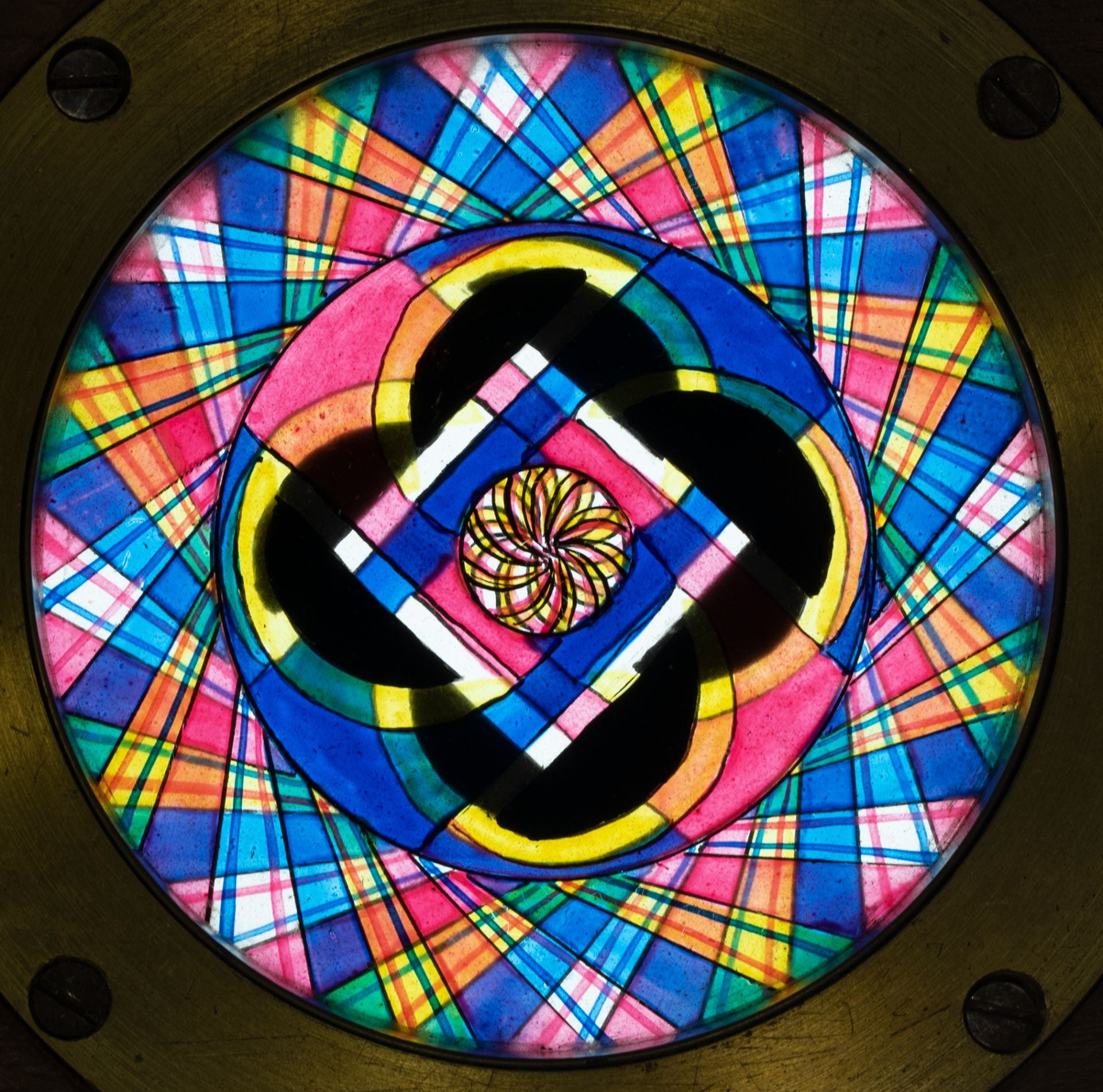 This kaleidoscope mechanical chromotrope magic lantern slide for children dates from around 1870-1880. The slide has two panels and was designed to be inserted into a lantern slide viewer. The handle of the viewer would be turned, so that one panel would move while the other remained stationary, giving a kaleidoscope effect. The slide comes from a collection donated to us by Paul Raphael in February 2023.
This kaleidoscope mechanical chromotrope magic lantern slide for children dates from around 1870-1880. The slide has two panels and was designed to be inserted into a lantern slide viewer. The handle of the viewer would be turned, so that one panel would move while the other remained stationary, giving a kaleidoscope effect. The slide comes from a collection donated to us by Paul Raphael in February 2023.
The Sea-Dragons as they lived by John Martin
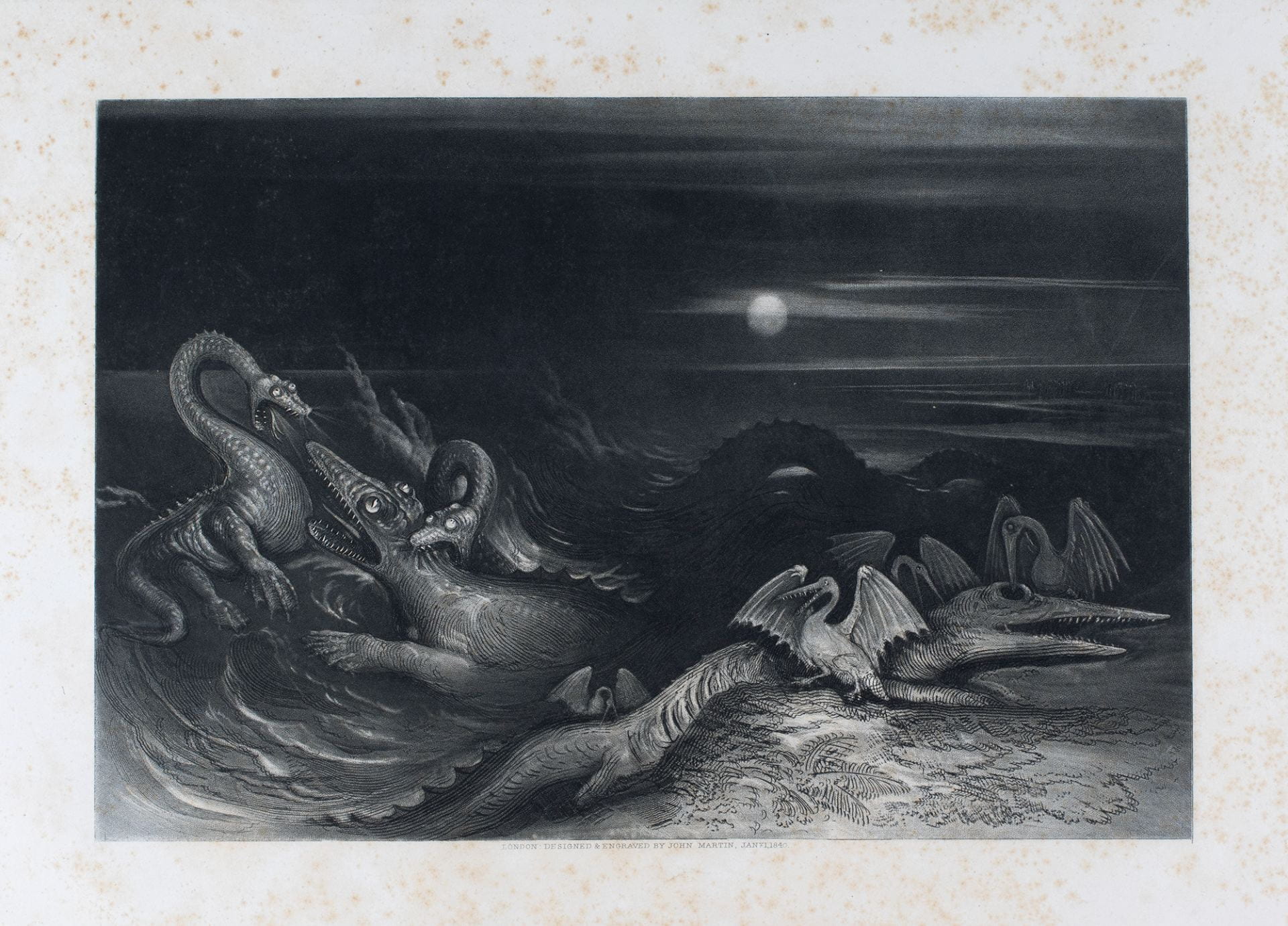 John Martin (1789-1854) was an English Romantic artist, known for his dramatic, apocalyptic scenes. The engraving, The Sea-Dragons as they lived, depicts plesiosaurs attacking an ichthyosaur, while pterosaurs feed on the body of a second ichthyosaur. It forms the frontispiece to The Book of the Great Sea-Dragons by Thomas Hawkins, published in 1840. Thomas Hawkins (1810-1889) was a Somerset fossil collector, who collected fossils from Lyme Regis and the Dorset coast, which are now held in the Natural History Museum.
John Martin (1789-1854) was an English Romantic artist, known for his dramatic, apocalyptic scenes. The engraving, The Sea-Dragons as they lived, depicts plesiosaurs attacking an ichthyosaur, while pterosaurs feed on the body of a second ichthyosaur. It forms the frontispiece to The Book of the Great Sea-Dragons by Thomas Hawkins, published in 1840. Thomas Hawkins (1810-1889) was a Somerset fossil collector, who collected fossils from Lyme Regis and the Dorset coast, which are now held in the Natural History Museum.
Danckerts’ Atlas (DM511)
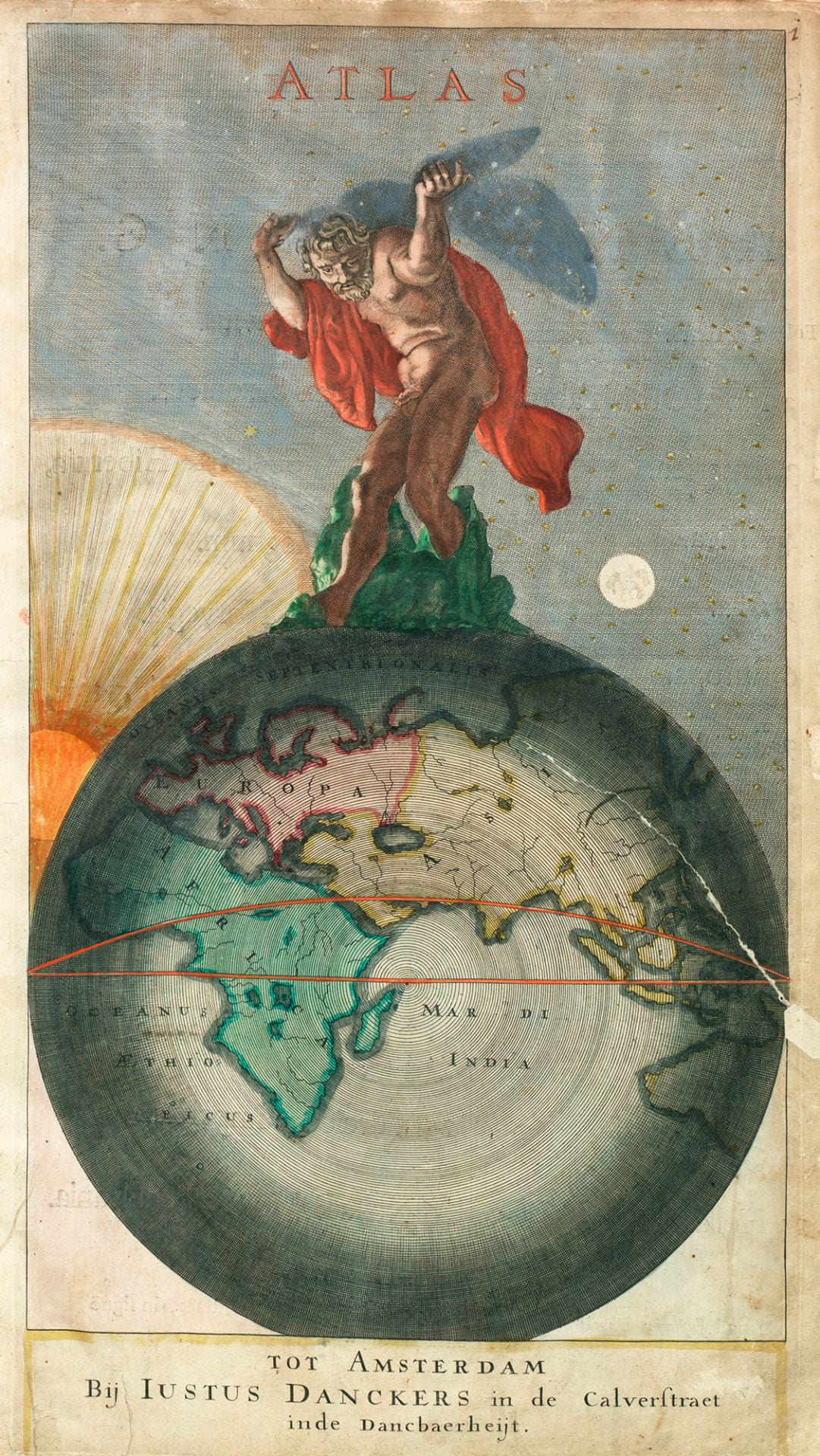 The title page from an atlas of 1690, produced by Justus Danckerts (1635-1701) who was part of a Dutch family of mapmakers, based in Amsterdam. The illustration depicts the titan, Atlas, holding up the sky. Our copy of the atlas came to the University of Bristol Special Collections as part of the Bristol Moravian Church Archive.
The title page from an atlas of 1690, produced by Justus Danckerts (1635-1701) who was part of a Dutch family of mapmakers, based in Amsterdam. The illustration depicts the titan, Atlas, holding up the sky. Our copy of the atlas came to the University of Bristol Special Collections as part of the Bristol Moravian Church Archive.
The exhibition also includes digitised material from Archaeology, Anatomy, The Botanic Gardens, Earth Sciences and the Theatre Collection.
You can view the exhibition online or book an appointment with Special Collections to view it on one of our VR headsets.
You can read more about the making of The Uncertain Space and its first exhibition on the blogs of our colleagues from Library Research Support and Theatre Collection.

